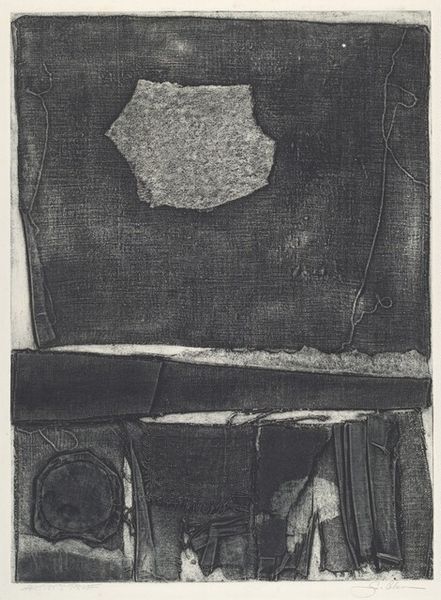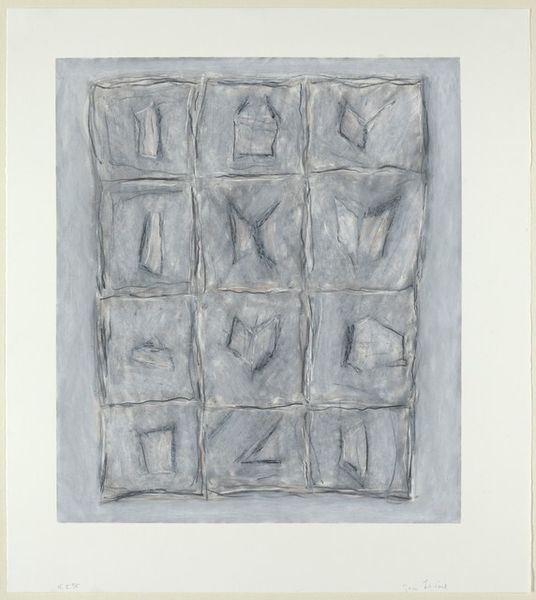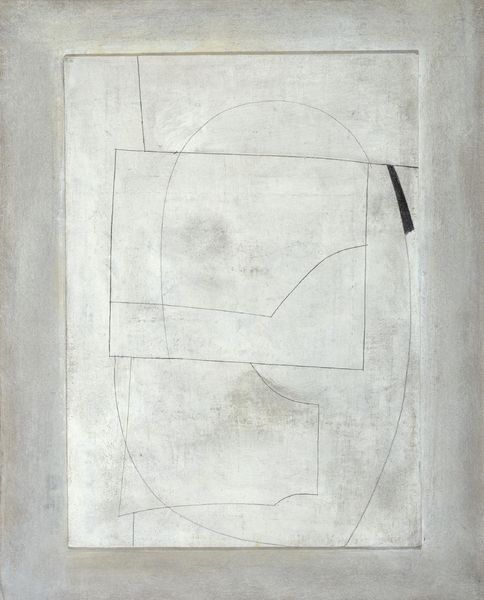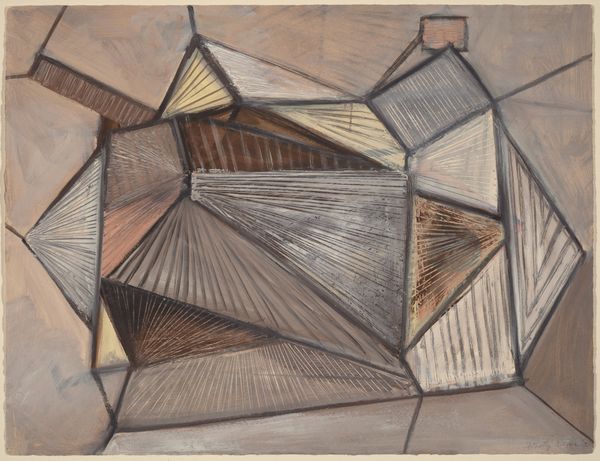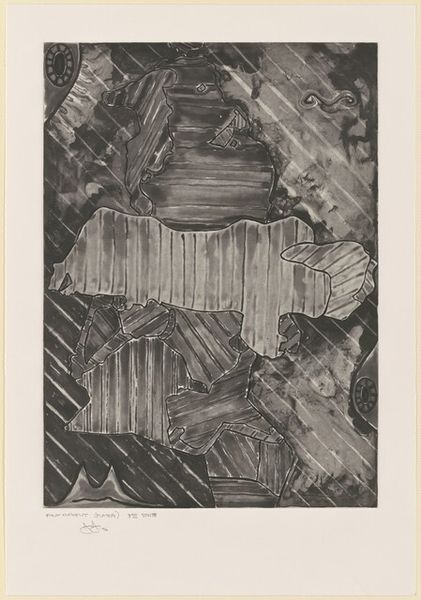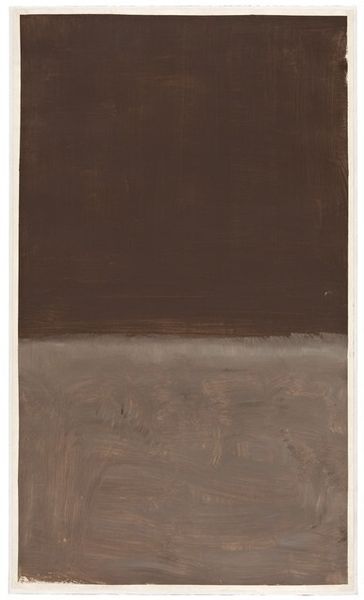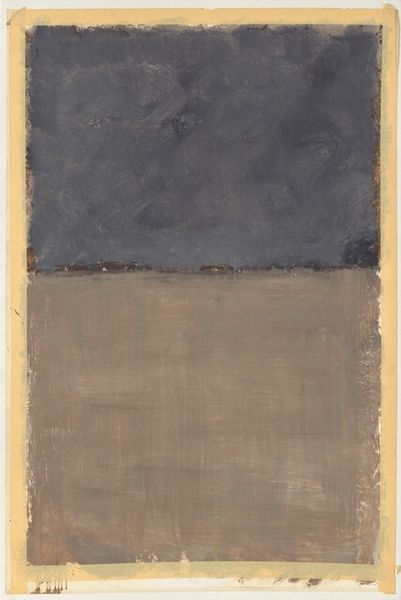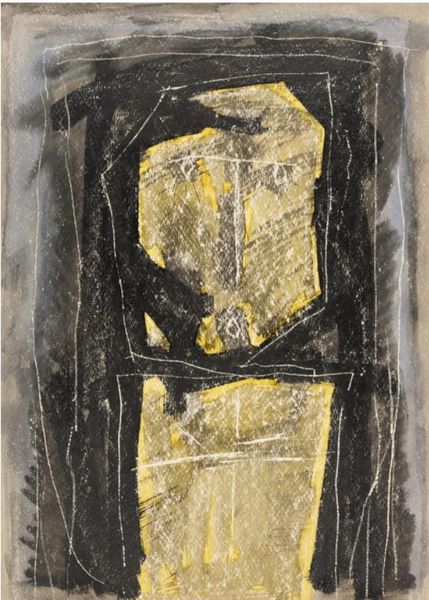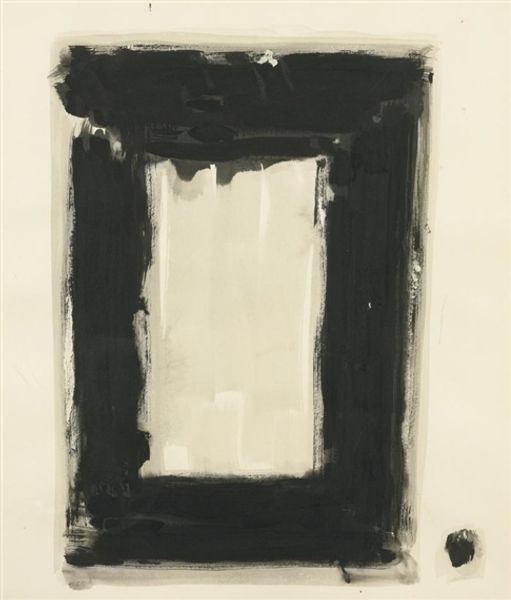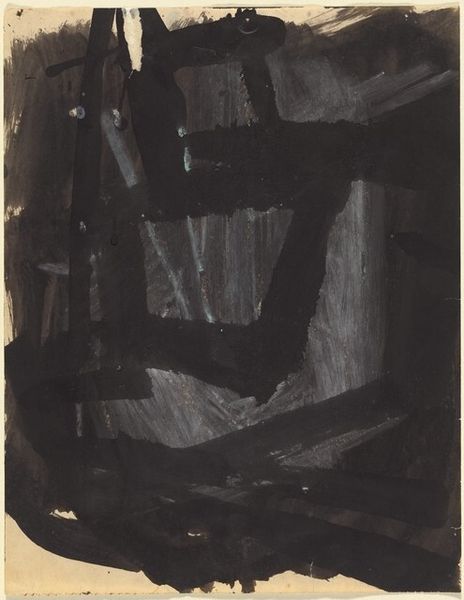
drawing, mixed-media
#
drawing
#
mixed-media
#
form
#
geometric
#
abstraction
#
line
Dimensions: sheet (irregular): 26.99 × 34.77 cm (10 5/8 × 13 11/16 in.)
Copyright: National Gallery of Art: CC0 1.0
William Willis made "Glimpse," sometime between the late 1800’s and early 1900’s, using watercolor and graphite on paper. Willis lays down these beautiful, almost monochromatic layers of paint. You can see the graphite underneath, like a ghost of the drawing process, which is so important. It's like the painting is showing you how it came to be, layer by layer. There's something about the grays and whites, how they blend and separate, that makes me think of mist or fog. Look at the dark shape in the center – it's solid, almost a void, but the way the paint is applied around it, with those soft, blurry edges, it feels like it could disappear at any moment. Then there is the mark making on the right that looks like a child’s drawing of a mountain! What’s not to love? It reminds me a little of some of Marsden Hartley's later, more somber works, but with a touch more mystery, you know? It leaves you wondering, searching for something just out of reach.
Comments
No comments
Be the first to comment and join the conversation on the ultimate creative platform.
